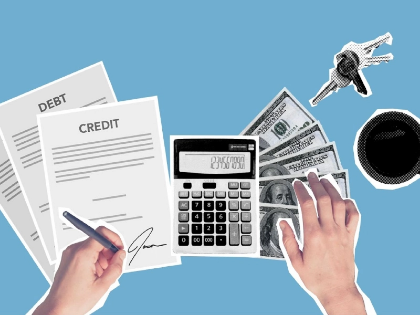But purchasers need to weigh the price, which includes depreciation that starts as soon as an automobile leaves the lot in addition to upfront and insurance charges. Consider making a greater down payment and shorter loan terms in order to lower the interest rate.
1. Cost

There are more factors to take into account when buying a car than just the make and model. The kind of auto loan you require and your financial situation may be greatly impacted by whether you purchase a new or used one.
The increased sticker costs of new cars can result in greater loan principle amounts. Greater principle amounts result in higher loan payments and a longer time frame to reach car payment freedom.
Still, there are ways to get a new car for less money. By haggling with the dealership and looking around for finance, you may frequently receive a fantastic offer. Since these can change, you should also look at the interest rates that are offered for different loan terms. The car loan calculator on NerdWallet can assist you in comparing the expenses and payments associated with various loan periods. Selecting a term that strikes a balance between your long-term objectives and affordability is crucial. Making the right choice can save you hundreds of dollars.
2. Rates of Interest

One of the main determinants of the cost of your car is interest rates. Rates differ depending on the type of vehicle you purchase and the lender.
Buyers with excellent credit can take advantage of 0% interest discounts on select models offered by Ford, General Motors, and Toyota through their respective financing departments. Because of their ties to the automobile, these are known as captive lenders. Low-rate loans are also provided by other lenders, such as banks and credit unions, although their rates may be different from those of captive lenders.
Because used cars have a lower resale value and carry greater risk because of their age, lenders typically charge higher borrowing rates on them. Reducing the length of your repayment term or making a larger down payment will help you save money on your loan. Paying your bills on time for utilities, rent, insurance, and streaming services helps improve your credit score, which might result in a cheaper interest rate. You may compare interest rates and fees to discover the best offer by using an online calculator to calculate your projected monthly payments.
3. Guarantee

Buying a car can require a large financial outlay. Whether you purchase new or used, the overall cost will include monthly payments, insurance, and up-front expenses like sales taxes and titling fees. A new car may also be more expensive to insure because of its increased worth and increased danger of theft.
The good news is that a variety of banks, credit unions, and online lenders usually offer financing alternatives for both new and used cars. Finding the best price can be facilitated by comparing lender offers and getting prequalified for an auto loan before visiting the dealership, if your budget permits it. If you don't want to wait, think about applying for a direct auto loan from an internet lender like RoadLoans, which can fund your car purchase more quickly and offer you greater flexibility in terms of the financing arrangement.
4. Upkeep Expenses

Similar to interest rates, the amount you ultimately pay for your car will be greatly influenced by the maintenance costs connected with an auto loan. When creating your budget, remember to account for gas, insurance, and registration expenses.
Another issue facing purchasers of new cars is depreciation, which occurs practically instantly after the vehicle leaves the lot. However, after you get past that first dip, the rate levels out and eventually slows down.
In the end, everything depends on your needs and the length of time you want to keep the vehicle. Once you've established your spending limit, compare rates on auto loans and locate a lender that will prequalify you to help you prevent any shocks later on. Investing in raising your credit score could also be beneficial since it can increase your financing alternatives. This can entail taking out a smaller loan or finding a cosigner in order to reduce your debt-to-income ratio.
Recommended Reading: Which amount of renter's insurance is needed?
























Lightweight yet direction-rich.
I can sense future audit ease.
Encourages pre-mortem culture.
How would this break?